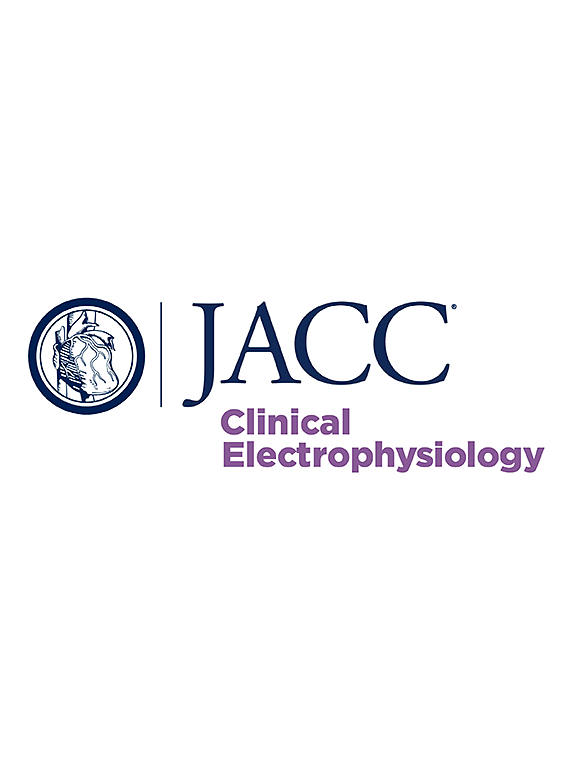Sustained Improvement in Quality of Life Following Catheter Ablation for Persistent AF Beyond 3 Years
IF 7.7
1区 医学
Q1 CARDIAC & CARDIOVASCULAR SYSTEMS
引用次数: 0
Abstract
Background
Catheter ablation (CA) is an effective treatment for atrial fibrillation (AF) that improves arrhythmia burden and quality of life (QOL). However, there are limited data on long-term QOL outcomes in patients with persistent AF (PsAF).
Objectives
This study sought to evaluate long-term QOL outcomes up to 3 years post-ablation for patients with PsAF in CAPLA (Catheter Ablation for Persistent Atrial Fibrillation: A Multicentre Randomized Trial of Pulmonary Vein Isolation vs PVI With Posterior Left Atrial Wall Isolation).
Methods
CAPLA was a large, multicenter, international trial that randomized patients with PsAF to an ablation strategy of either pulmonary vein isolation alone or in combination with posterior wall isolation. In this secondary analysis, QOL was assessed using the Atrial Fibrillation Effect on QualiTy-of-life (AFEQT) questionnaire, evaluated before ablation and repeated at 6 months, 1 year, and 3 years post-ablation. Patients underwent intensive rhythm monitoring to calculate 3-year AF burden. Statistical significance was set at P <0.05.
Results
Of 338 patients randomized in CAPLA, 309 (91.4%) had complete QOL data at 3 years post-ablation. The mean AFEQT score rose from 53.7 ± 22.6 at baseline to 78.7 ± 20.1 at 12 months and further increased to 88.4 ± 14.8 at 3 years (P < 0.001). Significant improvements were noted across all AFEQT subdomains, including symptoms, activity limitations, and treatment concerns. A significant negative correlation was observed between AF burden and QOL at 3 years (r = −0.45; P < 0.001), with AF burden >5% associated with no significant improvement in QOL.
Conclusions
CA for PsAF resulted in a significant incremental improvement in QOL over long-term follow-up. The sustained nature of QOL improvement over 3 years following ablation argues against a placebo effect.
3年以上持续性房颤导管消融后生活质量的持续改善:这不是假的。
背景:导管消融(CA)是房颤(AF)的有效治疗方法,可改善心律失常负担和生活质量(QOL)。然而,关于持续性房颤(PsAF)患者的长期生活质量结果的数据有限。目的:本研究旨在评估CAPLA中PsAF患者消融后长达3年的长期生活质量(导管消融治疗持续性心房颤动:肺静脉隔离vs PVI与左后心房壁隔离的多中心随机试验)。方法:CAPLA是一项大型、多中心、国际试验,将PsAF患者随机分配到单独肺静脉隔离或联合后壁隔离的消融策略。在这一次要分析中,使用心房颤动对生活质量的影响(AFEQT)问卷评估生活质量,在消融前评估,并在消融后6个月、1年和3年重复评估。患者接受强化心律监测以计算3年房颤负担。结果:在CAPLA随机分组的338例患者中,309例(91.4%)在消融后3年有完整的生活质量数据。平均AFEQT评分从基线时的53.7±22.6上升到12个月时的78.7±20.1,3年后进一步上升到88.4±14.8 (P < 0.001)。所有AFEQT子域均有显著改善,包括症状、活动限制和治疗问题。房颤负担与3年生活质量呈显著负相关(r = -0.45;P < 0.001),房颤负荷bb0.5 %与生活质量无显著改善相关。结论:在长期随访中,PsAF的CA导致了生活质量的显著改善。消融后3年内生活质量的持续改善反驳了安慰剂效应。
本文章由计算机程序翻译,如有差异,请以英文原文为准。
求助全文
约1分钟内获得全文
求助全文
来源期刊

JACC. Clinical electrophysiology
CARDIAC & CARDIOVASCULAR SYSTEMS-
CiteScore
10.30
自引率
5.70%
发文量
250
期刊介绍:
JACC: Clinical Electrophysiology is one of a family of specialist journals launched by the renowned Journal of the American College of Cardiology (JACC). It encompasses all aspects of the epidemiology, pathogenesis, diagnosis and treatment of cardiac arrhythmias. Submissions of original research and state-of-the-art reviews from cardiology, cardiovascular surgery, neurology, outcomes research, and related fields are encouraged. Experimental and preclinical work that directly relates to diagnostic or therapeutic interventions are also encouraged. In general, case reports will not be considered for publication.
 求助内容:
求助内容: 应助结果提醒方式:
应助结果提醒方式:


